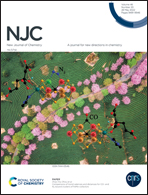Application of (4R)-aminoproline in peptide engineering: conformational bias and pH-responsiveness revisited†
Abstract
Peptides endowed with pH-responsiveness are attractive candidate substances in target oriented biomaterial and drug delivery applications. (4R)-Aminoproline (Amp) is a naturally occurring proline analogue, and it is one of the simplest building blocks capable of promoting the pH-sensitive behavior in proline-based peptides. This work aims to re-evaluate the molecular features of Amp residues, in particular their acid/base transitions, polarity, and molecular conformation. The analysis demonstrates that Amp might be very promising in promoting pH-triggered changes due to the pKa transition close to physiological pH values (about 7.5–7.8). The side-chain protonation did not produce changes in the ring conformation, although it affected the amide rotation properties. An examination of Amp-containing collagen mimicking peptides revealed the absence of a previously reported stabilizing effect of Amp on the formation of a triple helix. In circular dichroism spectra, the features of Amp-containing peptides demonstrate a few peculiar dependences from temperature and pH, and those can be easily confused with structural transitions that are not present. Overall, the results reported here will help in streamlining the application of Amp in the design and engineering of pH-driven structural and functional responses in peptides.



 Please wait while we load your content...
Please wait while we load your content...